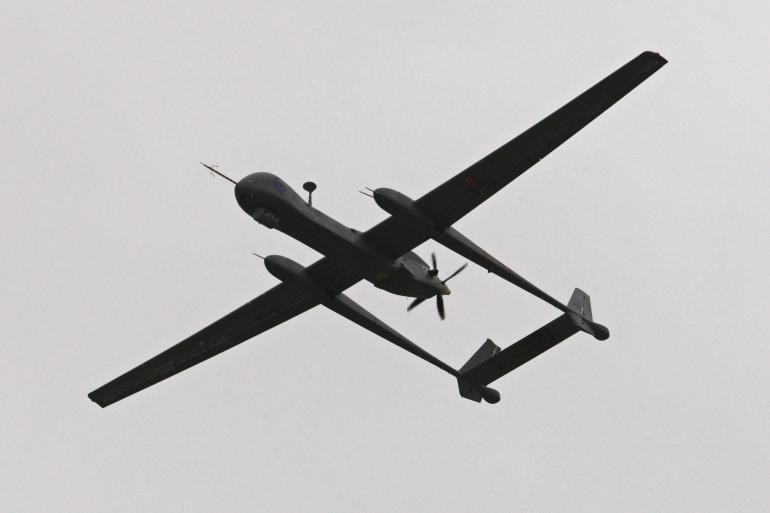Gabriele Barbati
International Business Times
July 5, 2013

JERUSALEM — Last November, when Israel launched Operation Pillar of Defense to stop rockets fired by Palestinian militants, it did not put a single boot on the ground in Gaza. It flew drones instead.
The unmanned aerial vehicles, or UAVs, initially developed for surveillance purposes, played a major offensive part during the eight-day campaign consisting of air and sea strikes. The remotely controlled aircraft fired weapons on military targets, in addition to those from Israel’s jet fighters and gunboats.
With no Israeli soldiers in the streets, unlike during the previous military campaign four years earlier, the buzz of the flying drones was a constant nightmare for people in Gaza. Around the world, that buzzing noise is not going away. Drones as war machines are here to stay, and Israel, together with the United States, is at the forefront of armed UAV development and use. In the last decade, U.S. drones have been sent on deadly missions to fight the war on terror worldwide, from Pakistan to Africa — and that’s only one aspect of the new, nonconventional way of fighting conflicts.
Since 9/11, warfare has dramatically been transformed from armies on battlefields to an unconventional array of cyberwarfare, international military campaigns against rogue states and terrorist militias, and unmanned systems. War is becoming more asymmetrical. Technology has to catch up with the new reality of fighting.
“During operation Pillar of Defense, we were able to intercept simultaneously as many as 15 rockets fired from Gaza, thanks to Iron Dome,” said former Israeli Army Brigadier General Daniel Gold, who heads the Israeli National Committee for Commercial/Civilian Cyber R&D. Considered the father of the Iron Dome, the missile defense system put into operation in 2011 to protect Israel from rockets and artillery shells fired from Gaza and Lebanon, Gold spoke during a panel on “Tomorrow’s Wars” at the Israeli Presidential Conference in Jerusalem last week. Other panel members were two prominent international military affairs commentators, Edward Luttwak, a senior associate of the Center for Strategic and International Studies in Washington, and Michael Walzer, a professor emeritus at Princeton University’s School of Social Science.Anti-missile systems — Iron Dome’s third version is under development — and military drones are two areas in which Israel excels. In 2010, Israel Aerospace Industries, or IAI, delivered to the Israeli Air Force the new Heron TP, an armed drone with a 26 meter (85 foot) wingspan capable of remaining aloft for 36 hours. At the other end of the size spectrum, IAI also makes micro and hand-launched nano-UAVs, which support troops in hostile environments.
Israel and the U.S. are by no means alone at the cutting edge of this military revolution. In dozens of other countries, including Brazil and China, private and state-owned companies have embraced commercially promising technologies; UAVs can be employed for civilian purposes as well, from rescuing people after natural disasters to tackling wildfires.
But war hasn’t gone completely high-tech yet. Again, Israel and America are good examples. “In today’s wars, like in Afghanistan or when Israel fought the Lebanese militia Hezbollah in 2006, high technology is only the opening of the show. You always have to resort to medium tech later and to use eventually special units or local fighters armed with rifles and mortars. Ninety percent of military budgets is still spent on conventional arsenals, while the rest goes to new weaponry developed by private companies,” Luttwak said.
That percentage is changing, with the development of new unmanned weapons that can select and engage targets without further human intervention. Lethal autonomous robots, or LARs, as they are known, offer higher force projection, i.e. preserve the lives of one’s own soldiers, require fewer military personnel, offer much greater precision and accuracy and do not act out of anger or fear as humans might.
Yet artificial intelligence and sophisticated sensors cannot fully replace humans, especially when it comes to the LARs’ compliance with humanitarian and human rights laws established by several international treaties and conventions since the end of World War II.
 Daily Stormer The Most Censored Publication in History
Daily Stormer The Most Censored Publication in History


